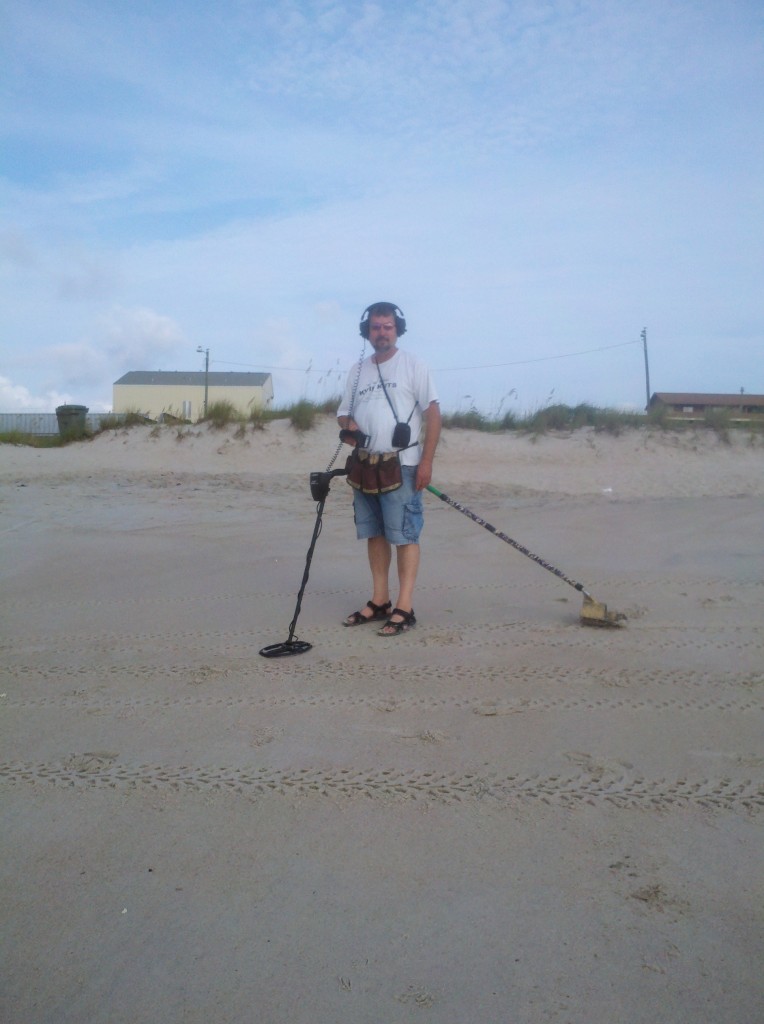What sort of metal detector should be used on the beach? This is a good question for the veteran hobbyist who lacks beach hunting experience as well as the novice. Knowing what to expect on the beach is helpful and knowing where to find it is even more important. Without the proper equipment, however, such information is irrelevant at best and essentially useless.
First, comes the choice of a detector. While the sand on most beaches looks innocent enough, the “wrong” type of detector can spell trouble for a beachcomber. Depending on ground mineral content, some detectors are practically worthless, others so-so, and yet others perfectly suited. A quality automated VLF detector with discrimination is the best choice. These instruments ignore iron magnetite (black sand) and salt minerals, and they permit discrimination to be adjusted.
This is good news for most hobbyists since the automated VLF detectors such as those in the Garrett Freedom and AT (all terrain) series are among today’s most popular models. High quality manual adjust VLF detectors such as the Garrett Master Hunters are equally suitable for beach hunting, especially when operated semi-automatically in their Discriminate Mode, which I will discuss shortly.
So named because they operate in the Very Low (radio) Frequency spectrum of 3 to 30 kilohertz, VLF detectors generally ignore minerals, including salt water. Some instruments have an internal switch that cuts out salt minerals. Automated models can be operated from zero discrimination through pull tab rejection.
Now, that doesn’t mean a hobbyist without an automatic VLF detector can’t search beaches effectively. Neither does it mean that a veteran treasure hunter has to leave at home that “Old Faithful” BFO or TR detector that has already found so many coins, rings or nuggets.
On iron mineral-free beaches such as those of Florida, a BFO, TR or most any of the later designs works well. When a BFO or TR features a discriminating mode, water-saturated sands can be worked easily. With discrimination control set near bottle cap rejection, salt minerals in the water are eliminated from detection.
Manual adjust VLF’s give good depth in most beach sands. Unless the circuits are “automated,” however, performance may be somewhat limited on beaches with heavy iron mineralization. A VLF with TR discriminating mode should be set at approximately the bottle cap setting. Of course, that setting imposes limitations, especially if the hobbyist decides to advance the setting to pull tab rejection and dig mostly coins. Many veteran beach hunters are probably aghast at that recommendation, since few of them use any discrimination unless the beach is a veritable “junk yard.” And, it is true that a hobbyist using discrimination is more likely to miss some valuable treasures than one who is “digging all targets.” That’s a fact of life; but, there are times when I believe that discrimination is needed.
Pulse induction models such as the Garrett Sea Hunter underwater detector operate nearly flawlessly on all beaches. Giving good depth, they are a pleasure to use. Generally, they are heavier because of extra battery requirements and the heavier case needed by submersible/land models. One shortcoming of pulse detectors is that small iron pieces, especially nails and hairpins, may not be rejected.
On beaches where black sand (iron magnetite) is present, the choice of detectors is narrowed considerably. BFOs and TRs are out of the question because they cannot cancel the effects of the natural iron. Pulse induction detectors ignore it as do both manual and automated VLF models.
They hobbyist who likes to hunt with a BFO or TR instrument should take it tot the beach and use it over wet sand with discrimination set near bottle cap rejection. If the detector’s audio cannot be “smoothed out,” black sand is probably the reason; another instrument may be required. I urge all beach hunters to consider purchasing one of the late model automated (sometimes called “motion”) discrimination detectors. Even better are the environmentally protected units which permit hunting in rain or splashing surf.
When a detector is not protected by its manufacturer against the environment, it is necessary to cover its control housing with a plastic bag. This will protect the detector from mist, rain and blowing sand, and offer less opportunities for ever-present beach sand to work its way into the electronic controls.

